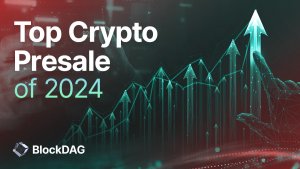HFT study shows $5bn at stake in latency-arbitrage races across global equity markets per year
A paper on high-frequency trading finds that the annual sums at stake in latency arbitrage races in the UK are about GBP 60 million.

The UK Financial Conduct Authority (FCA) has earlier today published an occasional paper dedicated to the impact of high-frequency trading (HFT). The paper entitled “Quantifying the High-Frequency Trading “Arms Race” is co-authored by Matteo Aquilina, Eric Budish and Peter O’Neill.
Matteo Aquilina works in the FCA’s Economics Department. Eric Budish is the Steven G. Rothmeier Professor of Economics at the University of Chicago Booth School of Business and Research Associate at the National Bureau of Economic Research. Peter O’Neill works in the FCA’s Economics Department.
The authors of the research use stock exchange message data to quantify the negative aspect of high-frequency trading, known as “latency arbitrage.” The key difference between message data and widely-familiar limit order book data is that message data contain attempts to trade or cancel that fail. The method relies on the simple insight that the failure messages are a direct empirical signature of speed-sensitive trading. If multiple participants are engaged in a speed race to snipe or cancel stale quotes, then, essentially by definition, some will succeed and some will fail. The essence of a race is that there are winners and losers – but conventional limit order book data does not have any record of the losers.
The authors of the study obtained data from the London Stock Exchange. The data included all message activity for all stocks in the FTSE 350 index for a 9 week period in Fall 2015. The messages are time-stamped with accuracy to the microsecond (one-millionth of a second).
The research shows that:
- Races are frequent. The average FTSE 100 symbol has 537 latency-arbitrage races per day. That is about one race per minute per symbol.
- Races are fast. In the modal race, the winner beats the first loser by just 5-10 microseconds, or 0.000005 to 0.000010 seconds. In fact, due to small amounts of randomness in the exchange’s computer systems, about 4% of the time the winner’s message actually arrives to the exchange slightly later than the first loser’s message, but nevertheless gets processed first.
- A large proportion of daily trading volume is in races. For the FTSE 100 index, about 22% of daily trading volume is in latency-arbitrage races.
- Race participation is concentrated. The top 3 firms win about 55% of races, and also lose about 66% of races. For the top 6 firms, the figures are 82% and 87%.
- Races are worth small amounts per race. The average race is worth a bit more than half a tick, which on average comes to about 2GBP. Even at the 90th percentile of races, the races are worth just 3 ticks and about 7GBP.
- In aggregate, these small races add up to a meaningful proportion of price impact, an important concept in market microstructure.
- In aggregate, these small races add up to meaningful harm to liquidity. The research finds that the “latency-arbitrage tax”, defined as the ratio of daily race profits to daily trading volume, is 0.42 basis points if using total trading volume, and 0.53 basis points if using only trading volume that takes place outside of latency-arbitrage races. The average value-weighted effective spread paid in the data is just over 3 basis points. Market designs that eliminate latency arbitrage would reduce investors’ cost of liquidity by 17%.
- In aggregate, these small races add up to a meaningful total “size of the prize” in the arms race. The relationship between daily latency-arbitrage profits and daily trading volume is robust, with an R2 of about 0.81, suggesting the latency-arbitrage tax on trading volume is roughly constant in the data.Using this relationship, the researchers find that the annual sums at stake in latency arbitrage races in the UK are about GBP 60 million. Extrapolating globally, the annual sums at stake in latency-arbitrage races across global equity markets are about $5 billion per year.
Regarding the magnitudes, the authors of the research conclude that the detriment per transaction is quite small: the average race is for just half a tick, and a roughly 0.5 basis point tax on trading volume certainly does not sound alarming. However, these small races and this seemingly small tax on trading add up to significant sums. A 17% reduction in the cost of liquidity is undeniably meaningful for large investors, and $5 billion per year is real money.
The results of the research are consistent with aspects of both the “myth” and “rigged” points of view. The latency arbitrage seems small enough that ordinary households need not worry about it and, yet, at the same time, flawed market design markedly increases the trading costs of large investors, and generates billions of dollars a year in profits for a small number of HFT firms and other parties in the speed race that then have significant incentive to preserve the status quo.









